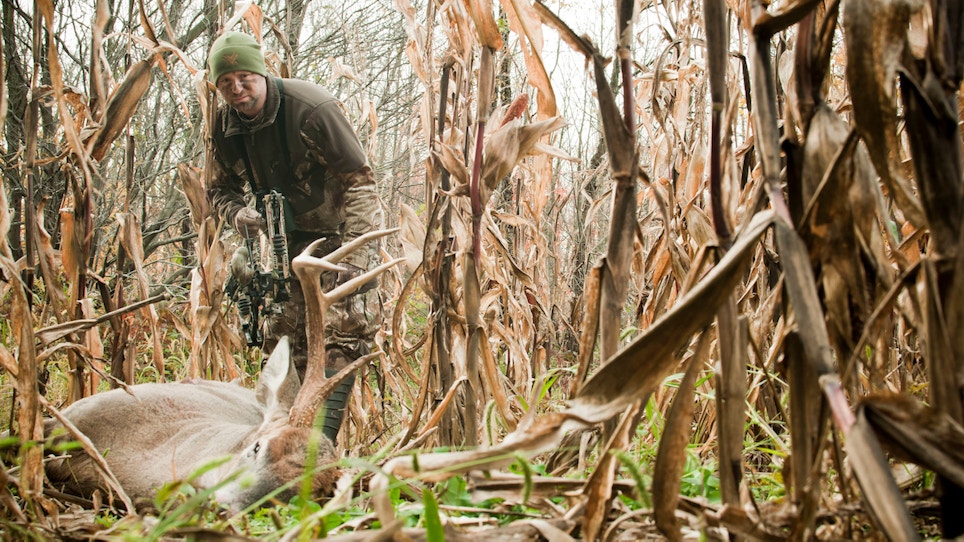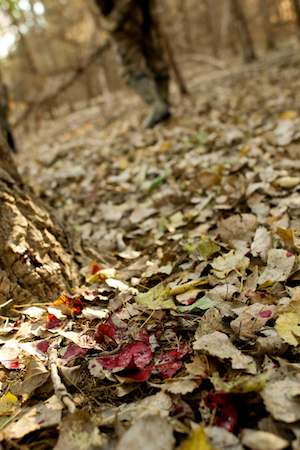Until recently, I considered myself a solid blood trailer. Throughout my bowhunting tenure, I’ve tracked numerous whitetail, mule deer, elk, pronghorn, bear and the like. I have a system that I’ve changed and adjusted as I've gained new knowledge.
But here’s what I recently discovered after searching for a Sooner State buck for over seven hours: My system sucks!
There, the first step is admitting you have a problem, right? And I’m admitting more than a problem — I’m admitting to being a horrible blood trailer. I felt like one of those worse-than-awful singers on The Voice or American Idol. You know, the ones that say, “But I used to sing in my room, and my mom told me I was really good,” after receiving a good lashing from the judges.
Yes, my good friend and owner of Croton Creek Adventures, Scott Sanderford, trashed my system. And thank God he did! The good news is that I wasn’t too prideful to let him teach me a new method to bloodtrailing — one that I have full and complete confidence in.
OK, this isn’t going to be an "inspect the arrow and take note of what kind of hit it was" article. This piece is all about getting on and staying on the blood until you find your animal.
Here's how it's done:
1. After finding the first blood, slow down.
Mark the blood with toilet paper or, if you’re tracking with a friend, have them stand or kneel at the blood until you find the next drop. Then leapfrog and continue the process. If you’re alone, keep the toilet-paper trail going. The key is to stay on and behind the blood. If you lose blood and start wandering around, you can easily step on a spec or blotch and make it vanish. There were several times Scott would grab me and say, “Stop, you’re walking on my damn blood.” Dried blood will crumble, leaves can easily be flipped and vegetation knocked down. Not to mention that, if you need to bring in a tracking dog (check state regulations before doing this), you would have blood molecules on your pants and could spread those molecules around the woods. This makes the dog’s job much tougher. Resist the urge to wander. Stay on the blood.
2. If you lose blood, don’t panic.
While tracking my Oklahoma buck, we lost blood countless times. Scott remained incredibly calm, stepped back each time and evaluated the buck’s course of travel. He also evaluated other possible paths of travel. Each time, though, it took more than 30 minutes. Rather than wandering about, we slithered forward an inch at a time. Each time, we picked up the blood and then the tracking job resumed.
3. Stop!
Tracking pin drops of blood while on hands and knees can take a toll on the eyes. Often, a hunter thinks he loses blood because his eyes no longer detect it. But, in truth, the blood is there and the eyes need a break. Scott and I would mark our last blood and take a 10- or 15- minute break whenever we'd lose the trail. After every eye timeout, we were able to find blood again. On more than one occasion, we found a lot of blood. On one particular instance, blood had soaked an entire patch of tall golden grass. We’d been right next to the grass for several minutes, but our tired eyes just weren’t working.
4. Don’t Be Afraid to Leave the Scene.
On multiple occasions, Scott and I went back to the house to grab a bite to eat and talk about what we’d found. We returned each time rejuvenated and ready to resume the search.
5. Never Give Up!
We knew this buck was dead, and we refused to let our psyche tell us otherwise. Like maybe — by some miracle — the buck survived and would turn up on trail cameras in a day or two. We kept going and kept looking, and eventually we were rewarded.
After finding my buck, I was elated. But in the days since, I’ve gotten upset with myself. I’m not going to lie, I’ve lost some animals. What haunts me is this question: How many of those animals would I have recovered if I had employed a better, smarter tracking routine? Sadly, I will never know. But I do know this: I will use the Sanderford Method for the rest of my days. And you should too.







